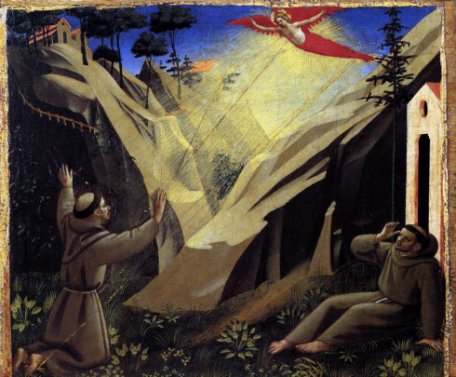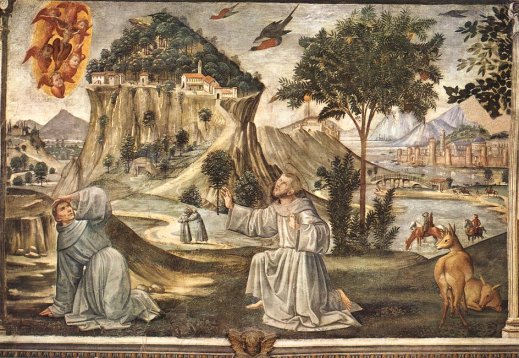|
The Art of Angels - Seraphim |
|
|
'The holy
designation of the Seraphim denotes either that they are kindling or
burning; . . .
The appellation of
Seraphim plainly teaches their ever moving around things Divine, and
constancy, and warmth, and keenness, and the seething of that
persistent, indomitable, and inflexible perpetual motion, and the
vigorous assimilation and elevation of the subordinate, as giving new
life and rekindling them to the same heat; and purifying through fire
and burnt-offering, and the light-like and light-shedding characteristic
which can never be concealed or consumed, and remains always the same,
which destroys and dispels every kind of obscure darkness.' |
|
 Baptistery, Florence. The higher figures are the seraphim. |
 Medieval Icon by Theophanes the Greek |
| Seraphim are the most senior of all the angels, and their function is to glorify God, and not to concern themselves with Earthly matters. There is. however, one legendary exception: The stigmatisation of St Francis was traditionally performed by a seraph. This is drawn from the writings of the Franciscan thologian Bonaventure, who had a lot to say about them in The Journey of the Mind to God. This idea is intended to support the notion of Francis as the new Christ. | |
 Upper Church, San Francesco, Assisi. Attributed to Giotto but almost certainly not by him. |
 Fra Angelico: Pinacoteca. Vatican |
|
This later version by Domenico Ghirlandaio from Santa Trinita in
Florence is interesting in showing the seraphim as children: this is
an approach to the depiction of angels we will look at in detail later.
|
|
 |
 |
|
Angelic Hierarchy Introduction Angels page 1 |
|
|
|
|